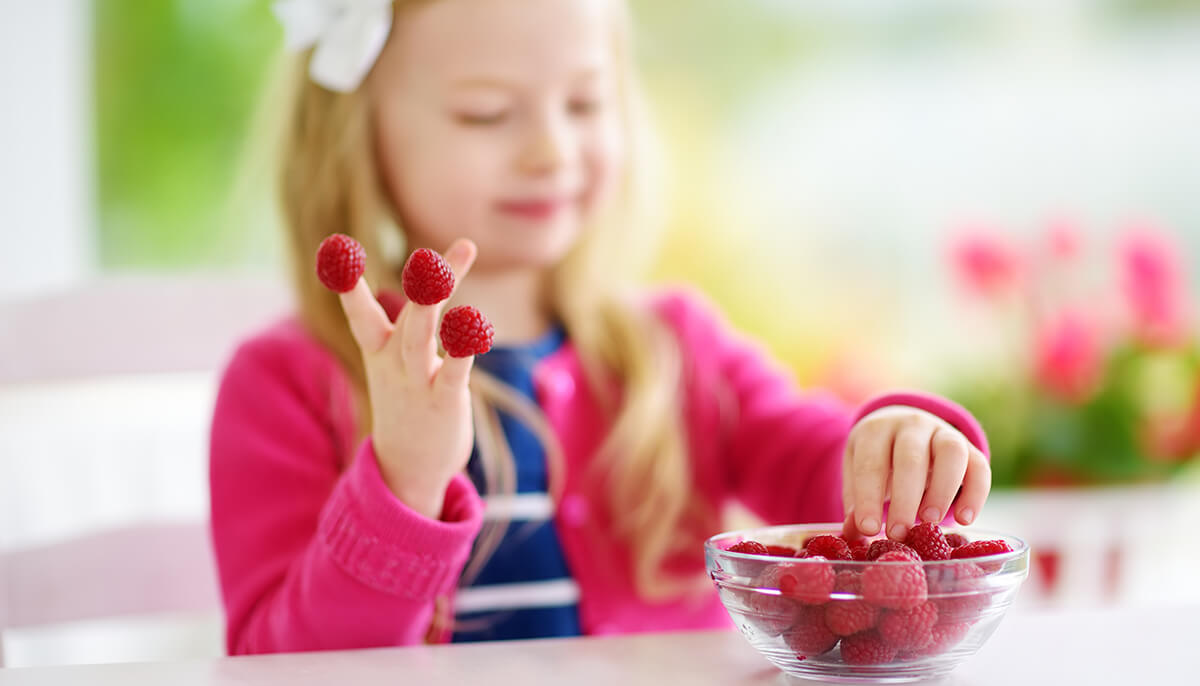Creating nutrient-dense snacks for kids can improve overall nutrition

Most American children are eating high-calorie snacks that offer little nutrition, yet snacks provide about one-quarter of the nutrients and calories they consume each day. Smart snacking can play a key role in healthy eating patterns. Choosing snacks from the food groups is a great way for children and adolescents to meet their daily nutrient requirements and have energy throughout the day. Creating a snack-time mini meal by combining two or more food groups can help bridge nutrient gaps throughout the day.
Many children snack at regular intervals—during a morning break at school, after school, before dinner and after dinner. To ensure that snack time is not wasted on foods with minimal nutrition, keep a stocked refrigerator and pantry of nutrient-rich foods. With these foods available, the temptation to rely on empty-calorie foods like sweets and chips will be limited. Younger kids may be happy with a container of yogurt or a plate of sliced banana with peanut butter. Older children can be famished after school and easily eat a large bowl of cereal.
It is also a good idea to keep snack time in the kitchen rather than in front of the television or during other activities. By focusing on the snack itself, children can avoid mindless eating.
Try these other suggestions to boost the healthfulness of snack time:
Make sure it’s not thirst. Kids often mistake hunger for thirst. In warm weather and for active children the need for fluids increases, so serve ice water or a glass of milk first. If they're still hungry, give them a snack. Avoid giving children sugar-sweetened beverages such as soft drinks, fruit drinks, fruit-flavored drinks, sweetened waters and sports drinks, which provide calories with little or no nutritional value.
Eat dinner for snack. If after-school activities are in the middle of the usual dinner hour, serve a full meal before the activities and offer a snack before bed. If there’s no time to cook, warm up leftovers or a made-ahead meal
from the freezer.
Don’t fall into the overfeeding trap. With the increasing availability of food and beverages, it’s important for kids to learn what it feels like to be hungry and full. Some children snack to the point that they never feel
any hunger. Resist falling into the habit of providing food when children are bored. Instead of offering snacks to keep little ones occupied, find something else they could do in the car or store.
Appeal to the senses. Encourage kids to consume snacks from the food groups rather than foods with minimal nutrients. The smell of healthy oatmeal cookies or muffins baking will draw kids into the kitchen in no time. Even the
aroma of a toasting bagel pizza will signal that it’s time to wash hands and have a simple snack that is nutritious and tasty.
Kids’ Choice. Older children often want to have more say in what they put into their mouths. Leave out a bowl of fruit and stock healthy choices in the refrigerator and pantry.
There are simple snacking tips children and adults can take to help improve snacking habits.
To create a satisfying snack from two or more food groups, consider the following options:
Bessie O’Connor, RDN, discusses how nutrition at an early age supports health of the whole child.
Watch hereLearn how to eat snacks that boost nutrition.